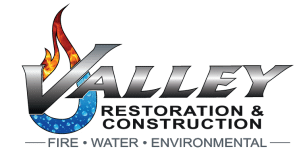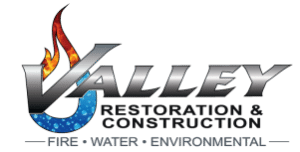Drywall is used for walls and ceilings and is a great way to build internal walls as well as design features. Its resilience and versatility make it the perfect building material, which is why it has largely displaced lath and plaster walls.
Drywall is made of gypsum and heavy paper. This makes it highly versatile and easy to install. It is lightweight yet strong and can be sound- and temperature-insulated. As a bonus, it is less expensive to install compared to other construction methods.
In addition, drywall can be cut to the exact dimensions your home requires: this inherent adaptability makes it suitable for design features such as arches and encasings. You can build shelves, countertops, wall features, room dividers, ceilings, storage spaces, displays, and even furniture from drywall.
Another advantage of drywall is that you can hang, place, or decorate whatever you want on it.
The only downside to drywall is its susceptibility to water damage, as gypsum and paper absorb water readily. A few drops of water will not crumble or damage your drywall but a major water leak or flood can cause serious damage.
If this has happened to you, you need to call Valley Restoration and Construction to inspect the damage, stop and repair the leak, and replace your drywall with new sheets. Also, mold starts building up when water lingers in building materials. Even if you replace the drywall yourself, you need mold specialists to stop the spread of mold and moisture.
How Do I Know If My Drywall Is Water-Damaged?
Stains On Your Drywall
The first thing to notice is coffee-colored stains or discolored paint. It can be a small area at the bottom or top of the drywall or it can be a larger stain. If the stain grows with time, the water problem is getting worse.
You should consult with Valley Restoration and Construction right away to mitigate the problem and protect your home and health.
Sagging and Crumbling Drywall
One of the most common places to find asbestos in residential dwellings is in the drywall texture and joint compound. This could be especially concerning in instances where the drywall is sagging or flaking, thus causing any potential asbestos material to become friable.
If your drywall is crumbling or displaying signs of disintegration, water has entered the integral part of the drywall and damaged the gypsum. This can be particularly dangerous with drywall ceilings, because pieces of the ceiling can collapse on you and your family.
Drywall walls can get warped with water. This happens when water decays the internal structure of the drywall and weighs it down, so that the wall starts sagging and warping. As it gets saturated with water, it starts bulging, hence the picture of a warped wall.
Flaking Paint
If drywall paint is peeling, flaking, and shedding, you may have water damage inside the drywall slowly eating away at your wall’s integrity.
If its integrity is compromised in such a way, drywall can’t recover its original shape. Unfortunately, you will need to replace it.
Mitigate the Water Leak and Fix the Problem
If you have signs that your drywall may be water-damaged, you should call Valley Restoration and Construction in Montrose, Colorado to inspect the problem and restore it. Depending on the exact causes and extent of the damage, we will fix the water leak, check for mold, and replace the drywall.
Fix the Water Leak First
Water damage may come from a leaky roof, a broken pipe, a toilet problem, a leaking washer or other plumbing issue.
Remember that water travels far: if you see water damage on your drywall, the problem may not be located directly behind it. Water could easily have traveled there from farther away.
In addition, water damage can have unexpected consequences. To fully mitigate the water damage, our specialists will first locate the source of the problem and repair it.
Replace the Drywall
Once the water leak has been taken care of, you need to tackle the drywall. Small damage may be fixed easily, but drywall that is sagging, crumbling, and warping is beyond repair. You need to remove the damaged drywall and replace it with new. Luckily, drywall is easy to replace and budget-friendly.
Be Cautious about Mold
It only takes 24 to 48 hours of moisture for mold to set in. Even if you have taken care of the water issue, mold colonies may already be building inside your wall. Mold can severely impact your health, so you need to act right away.
Once you remove the drywall sheets, you need to dehumidify and dry out the affected area. If there are signs of mold colonies, our Valley Restoration and Construction mold specialists will decontaminate the area, remove mold spores with the right tools and chemicals, and dry it out to remove any residual moisture.
We have dehumidifiers and professional fans to remove humidity from any affected areas. We also have HEPA filters to decontaminate the air from mold spores and special sprayers to sanitize all affected areas.
If Drywall Damage Was Caused by Sewage Backup
If the water damage on your drywall was caused by sewage backup, you shouldn’t attempt to clean or remove any drywall sheets on your own. Call Valley Restoration and Construction and we will take care of the issue.
Sewage water is filled with harmful bacteria that require special equipment, chemicals, and know-how to exterminate. Your everyday home detergents cannot properly sanitize or disinfect such bacteria-loaded black water. In addition, you may need to clean, sanitize, disinfect, sterilize, and deodorize the house depending on your exact circumstances.
Small Water Spills on Drywall
A glass of water spilled on drywall doesn’t require you to remove the whole drywall sheet. Wipe out the water with a cloth and make sure there is no residual moisture lingering on the drywall.
If you have a bigger spill and wish to be extra cautious to avoid the development of mold, place a fan toward the affected area and run it for a few hours to remove any excess humidity.
Valley Restoration and Construction for Your Drywall Emergencies
Contact Valley Restoration and Construction online or call us at 970-964-4437 if you see any signs that your drywall surfaces are suffering from water damage.
Our crew will be with you to inspect the problem, fix the water leak, mitigate the water damage, and replace your drywall. We are available 24/7 and serve Montrose, Colorado, and all the surrounding areas.


